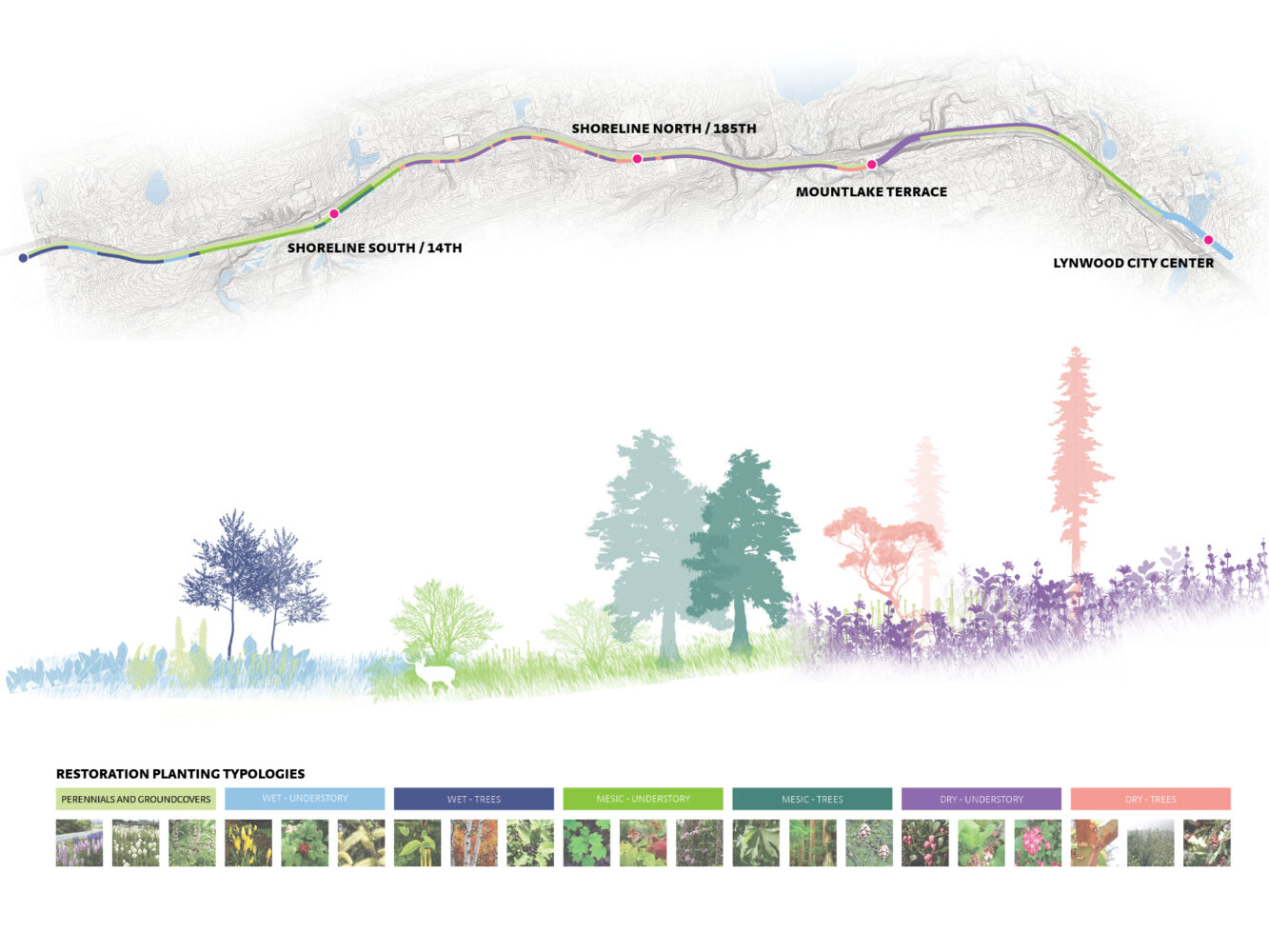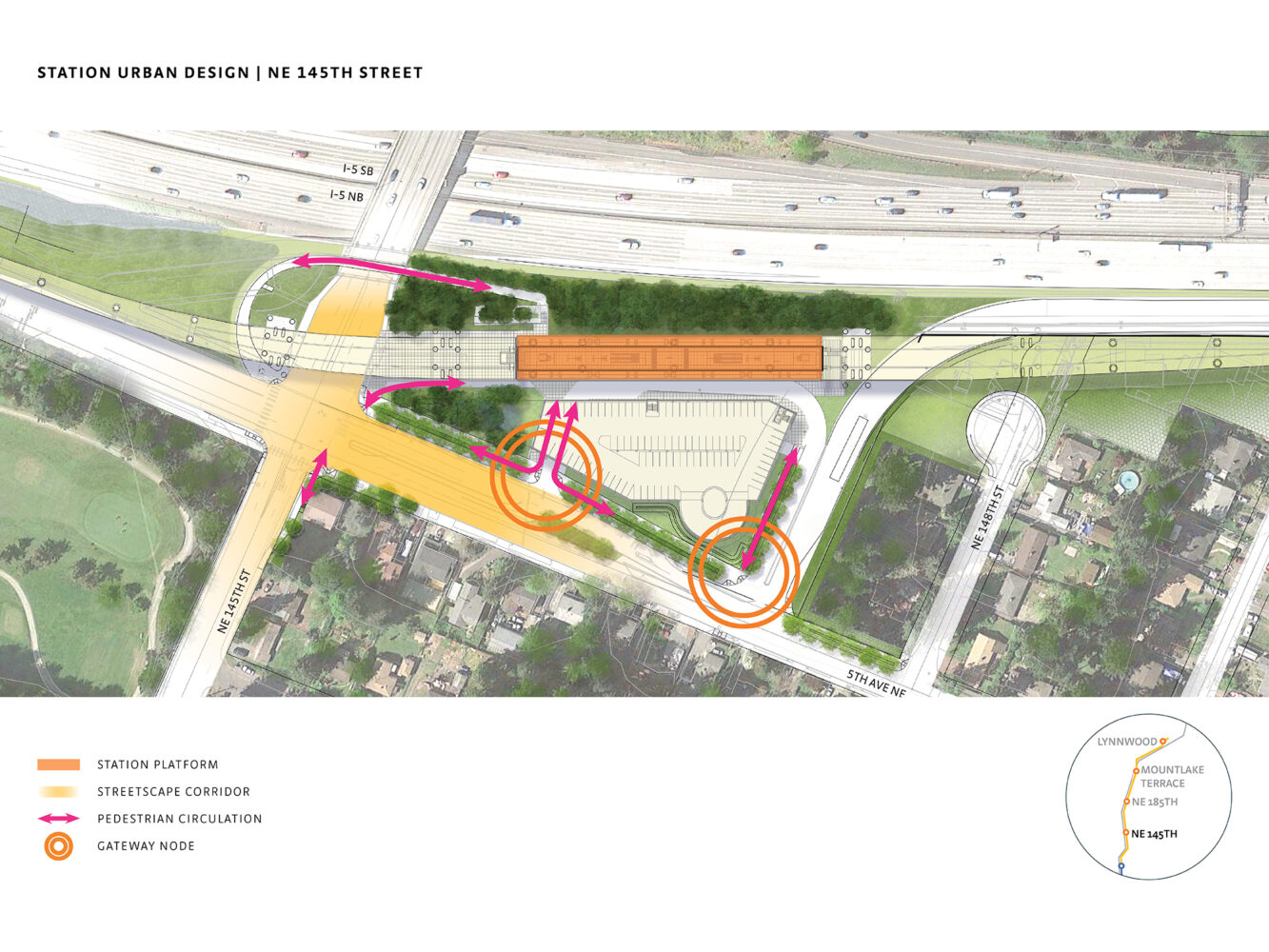





































client: sound transit
size: 100 acres
location: seattle, shoreline, montlake terrace, and lynnwood, wa
duration: 2014-2016
construction cost: $1.8 billion projected
The 8.5 mile extension is first and foremost a transportation infrastructure project expanding the regional high capacity system. The site strategy sets the system within the northwest landscape and proactively integrates ecological function, regulatory restoration requirements, regional aesthetics and risk management in the early planning for the life of the system. The result is a visionary and tactical plan to create a future daily experience fundamentally embedded in the Puget Sound Lowland Forest ecosystem.
More >The Lynnwood Link Light Rail Extension will provide four new link stations connecting Seattle’s Northgate Station to the City of Lynnwood, 8.5 miles to the north, forming a critical public transit link in one of Washington’s most congested highway corridors. The rail alignment follows Interstate-5 passing through a glaciated topography, regional drainages and uplands in the predominately native evergreen Puget Sound lowlands forest. This landscape is central to regional identity and transportation corridors connect us all daily with the place.
The central challenge during the early design of a complex infrastructure project is development of a systematic process that elevates the importance of the landscape, allowing the early understanding of opportunities and risks. A clear framework of goals and decision making creates a catalyst for integrated design, management and ultimate long term success. The design strategy visually and functionally integrates the rail corridor into the larger compelling Pacific Northwest landscape. This project is an example of using an engineering process to drive the creation of a meaningful, resilient, and regional landscape experience.
The ultimate goal is to structure future design decision-making to ensure the final landscape and urban design of the corridor creates place with a meaningful and distinct connection to the region.
Less <